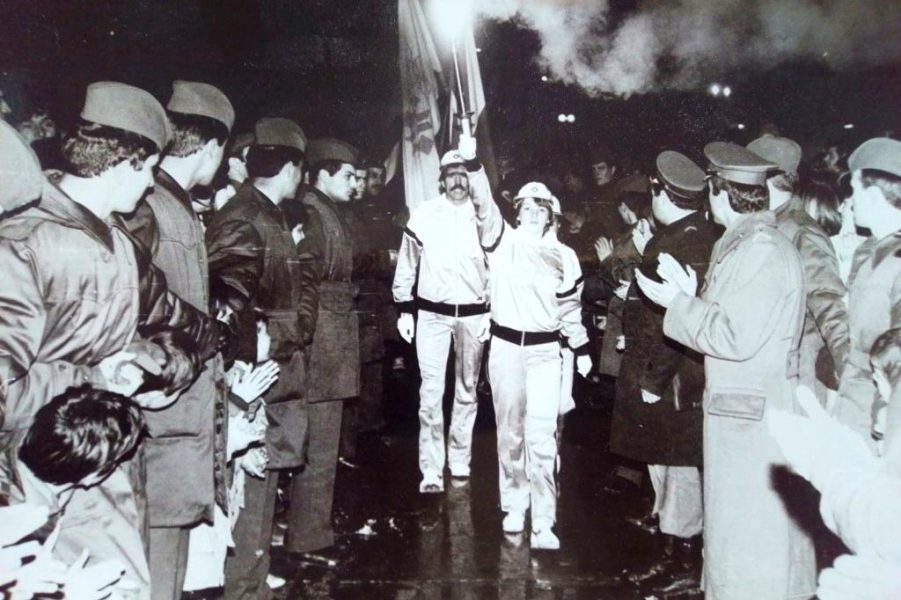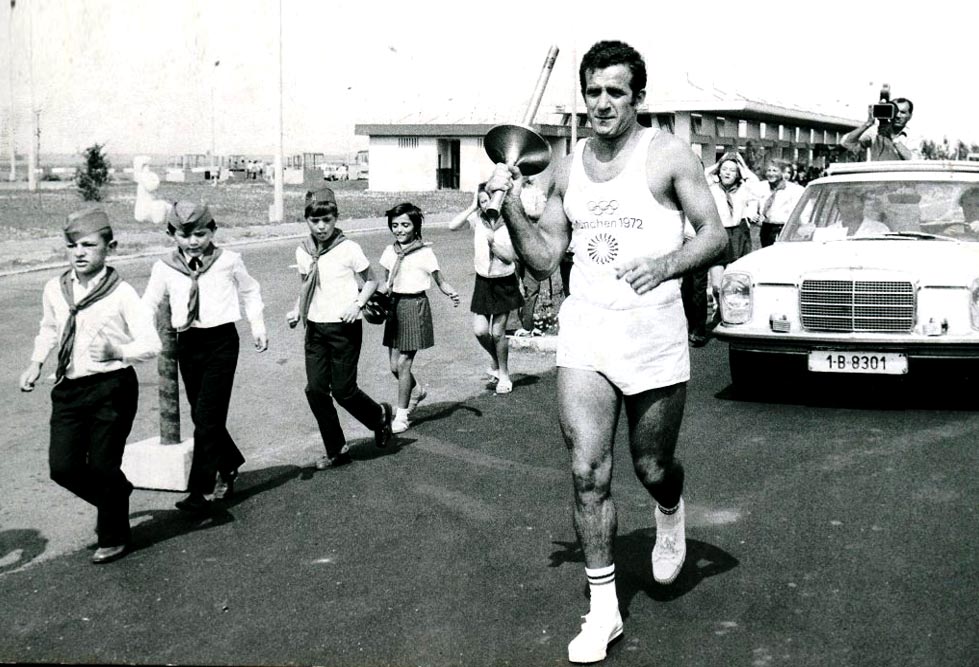First kindled in 1936, the Olympic torch undertook a pioneering voyage from the ancient site of Olympia to Berlin, marking its inaugural journey in the annals of the Olympic Games.
Crafted in excess of 3,000, these torches were not merely vessels of fire but beacons of legacy, each remaining with its bearer as a memento of the illustrious path trodden.
The torch’s 3,187-kilometre odyssey through seven European nations briefly illuminated Yugoslavia, casting a three-day spell across the nation from Caribrod to Subotica.
The heart of the then Kingdom of Yugoslavia, Belgrade, witnessed an elaborate reception on the 27th of July at the square then known as Prestolonaslednikov’s, today’s Terazije. Here, where once stood the Terazije Fountain, a multi-tiered stage was erected, transforming the square into a ceremonious tableau.
Vlada Ilić, Belgrade’s mayor at the time, ignited the flame and delivered an apt speech, setting the stage for the torch’s continued journey across the new King Alexander’s Knightly Bridge (a precursor to today’s Branko’s Bridge), en route to Novi Sad and Subotica.

Fast forward to 1972, the Olympic flame graced Belgrade once more in anticipation of the Munich Olympic Games. A significant handover occurred on the 17th of August at Tašmajdan Stadium, where Rajko Mitić, a celebrated figure, received the torch from basketball player Cvetković, thereafter ‘enthroning’ the flame in the city. The following day saw the torch in the hands of athlete Štritof, who carried it towards the Hungarian capital. Subotica again played host to the torch, this time at the Stadium of Minor Sports, before an audience of four thousand—among them, Branislav Simić, a storied Greco-Roman wrestler and medallist from the Tokyo 1964 and Mexico City 1968 Games.
The torch’s third passage through the region came on the eve of the 1984 Winter Olympics in Sarajevo. Relit in Olympia, the flame was transported by car and plane to Athens, via Andravida, from whence it flew to Dubrovnik. January of 1984 saw Veselin Đuho, a member of Yugoslavia’s gold-winning water polo team at the Los Angeles 1984 and Seoul 1988 Olympics, become the first torchbearer on Yugoslav soil. From the original flame, a second was lit, leading to a bifurcation of its journey through the eastern and western sectors of the country. This grand relay, comprising 89 local torch runs, was a spectacle of Olympic spirit, reaching winter sports and regional sports centres with the participation of 7,500 individuals.
This historical traversal of the Olympic torch through Yugoslavia not only highlights the nation’s role in the grand Olympic narrative but also underscores the unity and pride that the torch’s journey inspires across nations and eras. Each passage of the flame through Yugoslavia was not just a precursor to the Games but a moment of national celebration, etched in the collective memory of its people.
